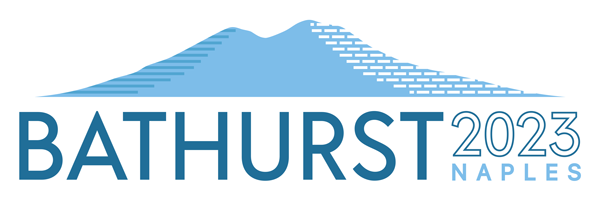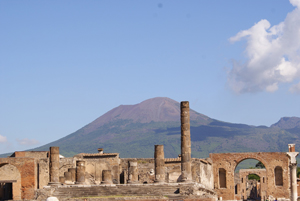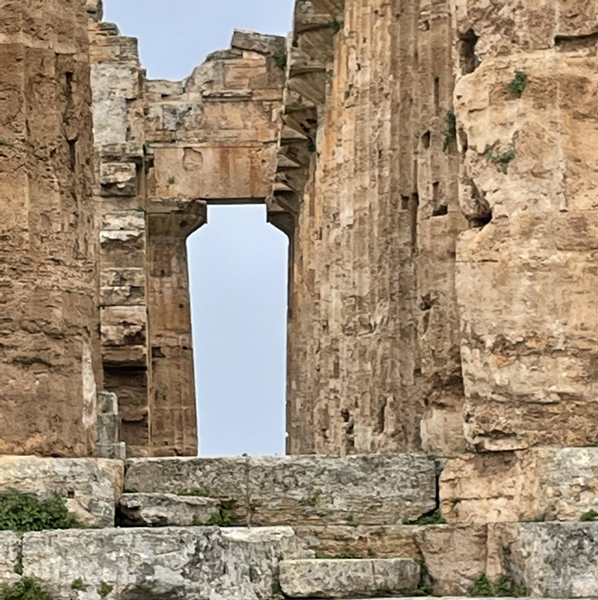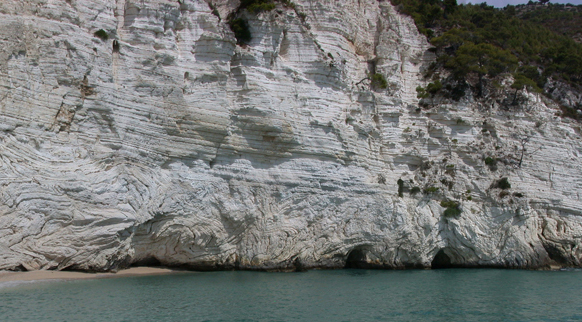
17th Bathurst Meeting
International Meeting of Carbonate Sedimentologists
Naples, Italy • 5-7 September 2023



Before the meeting, a boat tour along the Amalfi-Sorrento Peninsula will be offered. Starting from Salerno, it will give the opportunity to take in the spectacular carbonate cliffs of Amalfi, Positano, Capri and Sorrento the evolution of the Apennine Carbonate platform from Triassic to Miocene. A second pre-meeting field trip will be also organized: a volcanologic-sedimentological tour in the Pompei archeological area.
Five post-meeting field trips will also be available, from 1 to 3 days long, showing several features of the Apennine and Apulia Meso-Cenozoic carbonate platforms as well as some fascinating connections with the cultural heritage of southern Italy. See below for more details.
N.B. For logistic reasons, field trips need to be defined in advance and require a minimum number of participants per trip. The organisers count on your understanding and kindly request that you confirm your selections through your personal myBATHURST area as soon as possible and within 22 May 2023. After this date, the organisers cannot guarantee the availability of slots in the various field trips.

Sailing around the Upper Triassic to Quaternary carbonate cliffs of the Amalfi, Capri and Sorrento coasts. (1 day)
Start: Salerno - End: Napoli
Starting from the SE side of the Sorrento Peninsula, the boat will undertake a complete circumnavigation of the Sorrento Peninsula and Capri. Along the journey, the beautiful, hundreds of metres-high cliffs will reveal: 1) Upper Triassic dolomitic margin, slope and intraplatform-basin facies; 2) large scale dolomitization fronts in Jurassic facies; 3) the extinction of Lower Jurassic large bivalves and their replacement by massive oolite deposits; 4) Cretaceous limestones and dolomites with syn-sedimentary faulting and development of a massive megabreccia unit(s) as well as lateral transition to distal ramp with slumps, slope breccias and pelagic facies; 5) platform drowning by unconformable beds of cool-water heterozoan Miocene limestones grading into siliciclastic flysch; 6) large scale extensional and compressional faulting Neogene systems; 7) the impressive volcanoclastic terrace of Sorrento area. The view of the Vesuvius will accompany us on the way back to Naples harbour.

Field Trip Leaders
Alessandro Iannace, Mariano Parente
Dipartimento di Scienze della Terra, dell’Ambiente e delle Risorse, University Federico II, Naples
Provisional Program
Sept 4th - Depart from Salerno port (5 minutes walk from Railway station); sailing along Amalfi, Positano, Capri, Sorrento coasts; lunch onboard (no landing possible); arrival at Napoli port in the afternoon; 15 minutes walk to the Icebreaker party (San Marcellino) or to most Hotels.
Number of participants
50 to 150
Costs
110 EUR

The vanished city of Pompeii and the dynamics of its burial. (1 day)
Start: Napoli - End: Napoli
The field trip will offer the possibility to enjoy a (short) visit of two extraordinary archaeological sites of the peri-volcanic area of Vesuvius enriched by a sedimentological field analysis of pyroclastic deposits illustrating the dynamics of their burial. The whole sequence of the pyroclastic deposits of the Plinian AD 79 eruption will be observed and described at Oplontis (a patrician villa located in the Torre Annunziata neighborhood, also known as Villa di Poppea) and in the Pompeii archaeological excavations. Both sites offer the possibility to investigate the relationships between the types of pyroclastic deposits and their effects on Roman buildings and victims. The Pompei archeological site visit will be limited only to some of the most outstanding monuments.
Field Trip Leaders
Claudio Scarpati, Paola Petrosino
Dipartimento di Scienze della Terra, dell’Ambiente e delle Risorse, University Federico II, Naples
Provisional Program
Sept 4th - Departure from Naples by bus; visit of the outcrops; visit of the Archeological site; travel back to Napoli Central Railway Station 18.00h.
Number of participants
30 to 50
Costs
60 EUR. Tickets and light lunch are not guaranteed at the moment but will be probably included.
CANCELLED

Tufa and Travertines in the Archeological site of the ancient Magna Grecia town of Poseidonia/Paestum. (1 day)
Start: Napoli - End: Napoli
Poseidonia was a major ancient Greek city located on the Tyrrhenian coast of the Magna Graecia (southern Italy). Its ruins are famous for their excellent state of preservation, especially of three ancient temples in the Doric order and dating from about 550 to 450 BC. The city walls as well as the amphitheater are largely intact. After the Roman period, Paestum was abandoned in the Early Middle Ages, and left undisturbed and largely forgotten until the eighteenth century, probably due to changes in local land drainage patterns, leading to swampy malarial conditions. Travertine and tufa represent the local main building material, but also the deposits entombing the city from the Middle Age. The visit will be devoted not only to the sedimentological-depositional overview of these continental carbonates, but also to a wider perspective about their origin, use and fate especially when in symbiotic relation with human life/activity.
Field Trip Leaders
Enrico Capezzuoli1, Giovanna Della Porta2, Erlisiana Anzalone3
1Dipartimento di Scienze della Terra, University of Florence
2Dipartimento di Scienze della Terra, University of Milano
3Institute for Agricultural and Forest Systems in the Mediterranean, CNR, Ercolano
Provisional Program
Sept 8th - Depart from Naples by bus; visit of the outcrops; visit of the Archeological site; travel back to Napoli Central Railway Station 19.00h.
Number of participants
10 to 15
Costs
120 EUR

A panoramic walking on the top of the Sorrento Peninsula to observe the sedimentary dynamics of a Mid-Cretaceous carbonate platform. (1 day)
Start: Napoli - End: Napoli
This very short field trip will offer the opportunity to visit a large sector of the Lower Cretaceous Apenninic Platform succession while walking along a wonderful segment of the Alta Via dei Monti Lattari. It will be possible to observe a seismic-scale outcrop of limestone and dolomite beds, to discuss their Milankovitch-related cyclic stacking pattern, its influence on fracture distribution at several scale, the link between climate and process of dolomitization and finally a superbly exposed and uncommon example of Mass Transport Deposit developed in a flat lying, isolated platform. The view of the Bay of Napoli islands, Vesuvius crater and Li Galli small islands, from an altitude of more than 1400 m, will accompany the promenade.
Field Trip Leaders
Mariano Parente1, Sabrina Amodio2, Kei Ogata1, Muhammad Awais1
1Dipartimento di Scienze della Terra, dell’Ambiente e delle Risorse, Federico II University, Naples
2Dipartimento di Scienze e Tecnologie, Parthenope University, Naples
Provisional Program
Sept 8th - Depart from Naples by bus; walking along the crest path of Monte Faito; travel back to Napoli Central Railway Station 19.00h.
Number of participants
10 to 20
Costs
100 EUR

Facies type, distribution, and sedimentary processes along the Apulia Carbonate Platform (Upper Jurassic to Eocene, Gargano Promontory). (3 days)
Start: Napoli - End: Napoli (or Bari)
The Gargano Promontory (Apulia, southern Italy) offers the opportunity to investigate a complete carbonate facies transect from inner platform to basin and to reconstruct the various events that shaped and controlled the evolution of the Apulia Carbonate Platform during the Upper Jurassic, Cretaceous and Eocene.
The Apulia Carbonate Platform cropping out in the Gargano Promontory represents a well-known case study of a carbonate platform with different evolution through time. Facies distribution from inner platform to base-of-slope, stratigraphic architecture, depositional geometries and seismic-scale outcrops, together with retreat and drowning of the platform or margin collapses, constitute a textbook example of a carbonate system. The spectacular outcrops and well-preserved original geometric relationships are also useful as analogues of subsurface reservoirs as well as relevant for comparison with other coeval Tethyan carbonate systems.
Field Trip Leaders
Michele Morsilli, Claudia Morabito
Department of Physics and Earth Sciences, University of Ferrara, Italy
Provisional Program
Sept 8th Depart from Naples by bus; first outcrops; accommodation in Monte Santangelo.
Sept 9th: Visit on outcrops; accommodation in Vieste.
Sept 10th: Last outcrop and travel back to Napoli Central Railway Station (possibility to go to Bari Airport).
Number of participants
Max 35
Costs
350 EUR
CANCELLED

Moving from dinosaurs to the Anthropocene along shallow-water carbonates of the Apulia Platform and resting in the “Sassi”, the rupestrian old town of Matera (UNESCO world heritage site). (3 days)
Start: Napoli - End: Bari
This 3 day field trip around Matera (southern Italy) offers the opportunity to view, in a short distance, carbonate and mixed successions of different age, geodynamic context, latitude, and climate. We will discuss about: short to long-term cyclicity in Cretaceous peritidal deposits; the record (tracks) of dinosaurs; intraplatform basins; bedrock-constrained Plio-Pleistocene carbonate systems; relationships between tectonics and carbonate sedimentation; Plio-Pleistocene mixed bioclastic-extraclastic (carbonate) and bioclastic-siliciclastic deposits in the Bradanic Trough.

Provisional Program
Sept 7th Depart from Naples by bus at the end of the congress; accommodation in Hotel.
Sept 8th and 9th: Visit on outcrops.
Sept 10th: Last outcrop and travel to Bari Railway Station and Bari Airport).
Number of participants
20 to 45
Costs
430 EUR (Dinner not included)

Upper Triassic and modern microbialites along the coastline of the Calabria Lucania Border. (2 days)
Start: Napoli - End: Napoli (possibility to go to Lamezia airport)
In the field trip can be observed: a complete transect of the main sedimentary environments of a Norian dolomitized carbonate intra-platform system, from dasyclad-rich margin facies with spectacular tepees and syn-sedimentary cements, to microbial- buildups with an oligotipic metazoan fauna and slope to basin organic rich dolomites. This transect represents the close and better exposed analog og the Sicilia oil plays. In the same area an active fluvial barrage tufa system will also be visited, to discuss the microbial-mediated carbonate deposition in a bacteria/viruses-dominated biofilm.
Field Trip Leaders
Edoardo Perri1, Alessandro Iannace2, Mario Borrelli1
1Dipartimento di Biologia, Ecologia e Scienze della Terra, Università della Calabria
2Dipartimento di Scienze della Terra, dell’Ambiente e delle Risorse, University Federico II, Naples
Provisional Program
Sept 8th Depart from Naples by bus; Triassic outcrops from Maratea to Praia; accommodation in Diamante (Cosenza).
Sept 9th: Triassic and modern microbialites outcrop in the Corvino valley and travel back to Napoli Central Railway Station 18.00h.
Number of participants
10 to 24
Costs
230 EUR